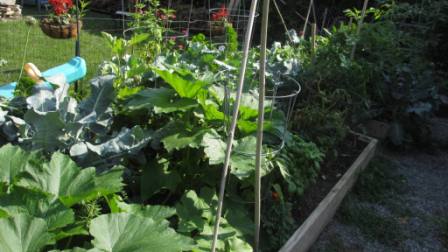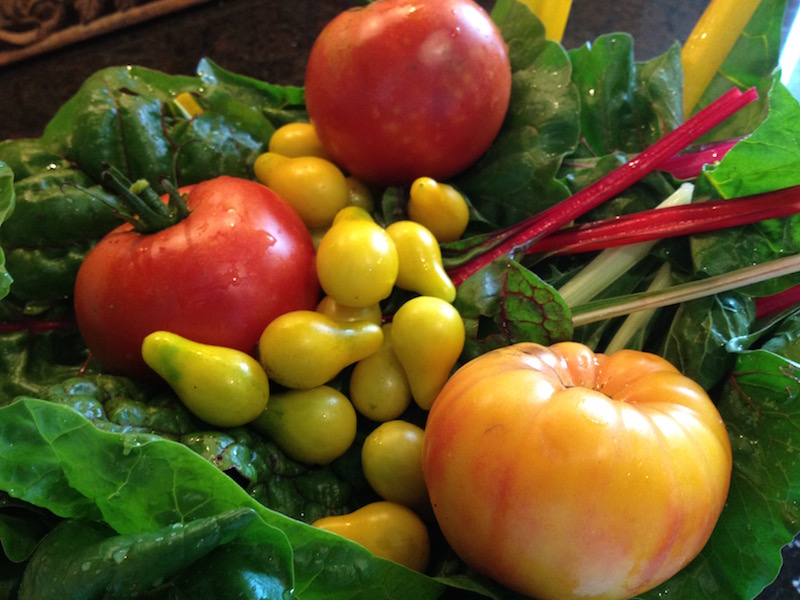Ah, another sad September when we must say goodbye to those glorious red tomatoes, luscious cucumbers and summer harvests of kale and chard. Trying to squeeze in time to tidy up the garden before back to school and autumn’s onset.
Did you know: you can prep garden beds in the fall so they’ll be ready for planting when next spring arrives?
And even better, 4 Seasons Lawn Care can handle the messy work for you. We’ll install wood framed garden beds, bring in fresh soil, compost and mulch; make gravel paths, and fence it all in to prevent deer and bunnies from invading.
Won’t it be great after a long, frigid winter, to finally step out into the warm spring sunshine and set to seeding those yummy veggies? Call Mike now to get your spring garden beds all planned out and ready this fall: 908 783 5733.
Some tips for putting your NJ garden to bed for winter:
Cut back plants that have been hit by frost. Also cut away, and dispose of (do not compost), plants that have shown disease or a pest problem. You don’t want either of these permeating the soil to emerge again next summer to destroy your next round of garden vegetables.
Harvest veggies that are still laying around the garden, such as tomatoes, peppers, eggplants, and so forth. It’s better to remove these now than leave them to rot and spread seed where you don’t want it. Tip: you can hang a “dead” tomato plant in your garage or basement if it still has green fruit on it. The tomatoes will continue to ripen.
Start a compost pile using the debris that you pulled from the garden (with the exception of the diseased plants – throw these in the trash). Shred fallen leaves and add them to the pile to make rich compost. Check out our convenient compost tumblers for an easy method of composting.
Add a layer of mulch now, to suppress weed germination in the spring. In addition to leaf mulch, straw works perfectly as a garden mulch and will attract spiders which keep insects at bay.
Pull and dispose of weeds from your garden beds. The winter freeze will deter them from returning in the spring.
Empty, clean, and disinfect gardening tools and containers. This will help prevent the spread of disease for next spring’s gardening effort. You can spray with a bleach and water solution, then rinse with the hose.
Plant garlic and rhubarb before the ground freezes – online gardening charts say mid-fall for our area.
Plant a cover crop. Buckwheat and rye are good choices for our area, although we admit that we don’t do this in our garden and therefore don’t know much about it. Cover crops attract deer, so you may decide just to compost instead.
Prepare the soil now, for easy spring planting later. You can purchase a soil kit and test it to be sure the pH favors veggie-growing conditions. Add compost and manure, and turn the beds, fluffing with a garden fork. Be sure that the manure has decomposed for six months or more, particularly if you plan to grow a fall garden; otherwise, you can spread disease to your veggies via the fresh manure which poses a serious health risk to humans. As a final prep step, rake out the garden beds to create furrows which catch rain.
Set up cold frames (you do not need to add the cover just yet, as it will likely be too warm if the season’s first frost hasn’t come).
Plant fall vegetables! You can move your mulch to the side, and plant cold-weather loving plants such as kale, broccoli, cabbages, kohlrabi, radishes, and collard greens. Be sure to check the labels of your garden seeds to find out how many days each plant will take to reach maturity.
Begin to harvest mature fall crops. Beets, beans, peas, carrots, cabbage and Swiss chard should have already been planted by midsummer’s in anticipation of a fall harvest.
Clean and store gardening items such as stakes, cages, garden ornaments and tools. Also sharpen tools and pruners, and lightly coat them with oil for protection.




